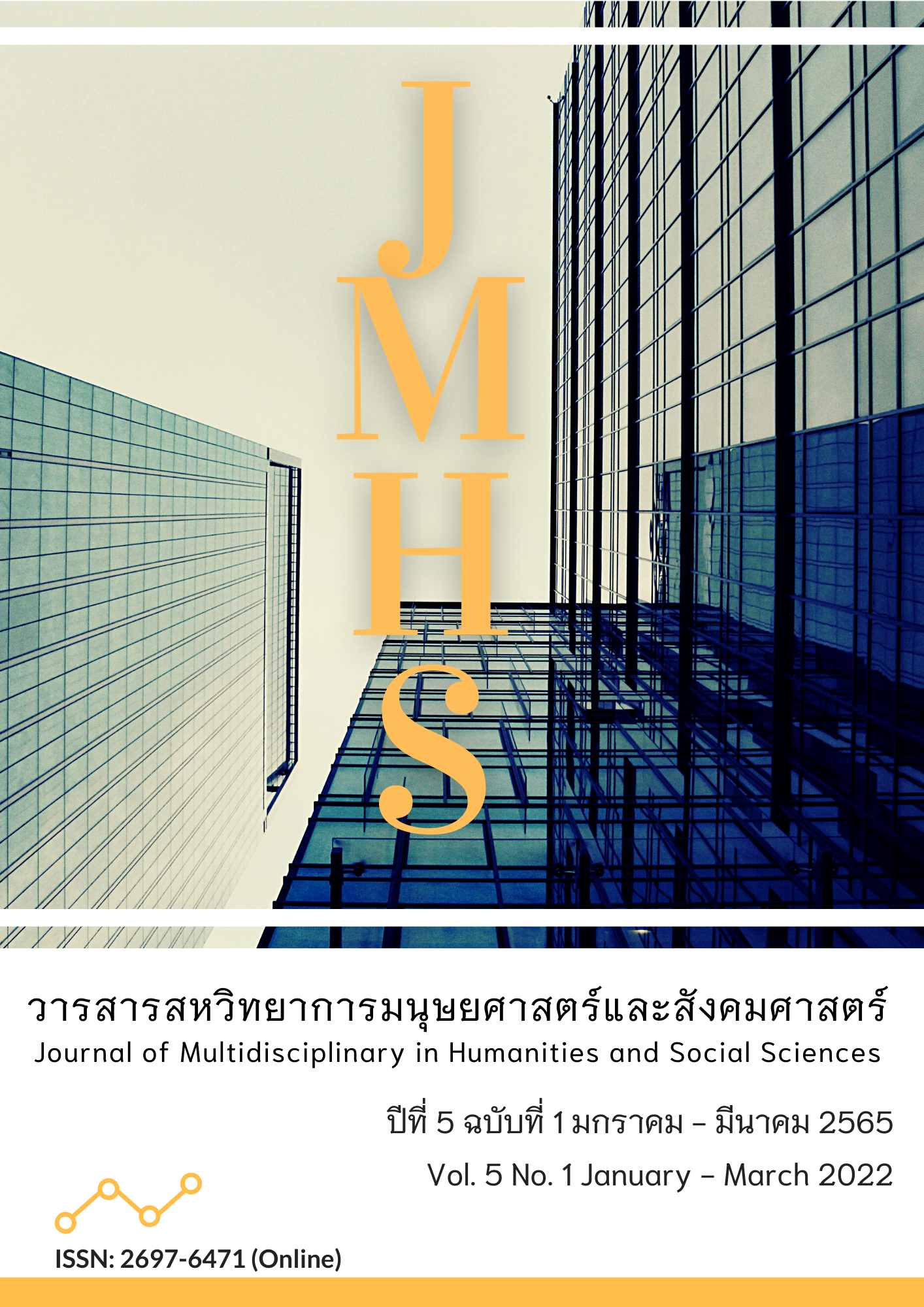A Study of The Supportive Teachings to Insight Practice in Salayatana Sutta
Main Article Content
Abstract
This research paper contained 2 objectives: 1) to study the teachings found in Salayatanavibhanga-sutta and 2) to study the Vipassana meditation practice in Salayatanavibhanga-sutta by the study of Theravada Buddhist texts such as Tipitaka, commentaries, sub-commentaries, texts, and other involving books, such as Visuddhimagga etc. then verified by an expert, reviewed, and complied with descriptions. The findings showed that Salatanavibhanga-sutta is a discourse dealing with the principal analysis that the practitioners must understand. The analyses are of six Ayanatana or internal senses, six outer senses, six consciousness, six contacts, eighteen Manopavicara, and thirty-six Sattapada. They must understand these principles by its characters, functions, and how the 12 sensual organs work. There are other teachings related and grouped in such teachings which enable us to use them as meditative objects of insight development for the advancement of insight knowledge which leads to complete realization.
The method in the Salatanavibhagga-sutta was based on the clear and systematic understanding of sensual organs as the basis of insight investigation. This method is Vipassanayanika practice, which refers to pure insight meditation called Suddhavipassana, using only momentary concentration to observe any present Nama and Rupa as the meditative object. This practice requires the gradual training on Bodhipakkhiyadhamma or enlightenment factors, conditional practice to know or to experience of truth realization as the tool of practice. In practical codes, when the six internal sensual contacts, the outer six sensual contacts, six consciousness and six contacts occur, and whenever happiness, unhappiness, or neutral feelings arise from six contacts as its factors, the meditator observing them all as they really are as impermanent, suffering, and non-self, will soon be bored, detaching from lust, finally liberated and freed from all suffering.
Article Details

This work is licensed under a Creative Commons Attribution-NonCommercial-NoDerivatives 4.0 International License.
Views and opinions appearing in the Journal it is the responsibility of the author of the article, and does not constitute the view and responsibility of the editorial team.
References
ชัยชาญ ศรีหานู. (2564). วิเคราะห์คำสอนวิปัสสนาในเตภูมิกถาที่มีผลต่อคตินิยมเชิงพุทธในสังคมไทย. วารสาร มจร บาฬีศึกษาพุทธโฆสปริทรรศน์, 7(1), 12-26.
พระธรรมกิตติวงศ์ (ทองดี สุรเตโช). (2551). พจนานุกรมเพื่อการศึกษาพุทธศาสน์ คำวัด. กรุงเทพฯ: สถาบันบันลือธรรม.
พระธรรมธีรราชมหามุนี (โชดก ญาณสิทฺธิ). (2542). หลักปฏิบัติสมถะและวิปัสสนากรรมฐาน. (พิมพ์ครั้งที่ 2). กรุงเทพฯ: โรงพิมพ์มหาจุฬาลงกรณราชวิทยาลัย.
พระพรหมคุณาภรณ์ (ป.อ. ปยุตฺโต). (2556). พจนานุกรมพุทธศาสตร์ ฉบับประมวลธรรม. (พิมพ์ครั้ง ที่ 25). กรุงเทพฯ: ผลิธัมม์.
พระพรหมมังคลาจารย์ (ปัญญานันทภิกขุ). (2539). เคล็ดลับของความดับทุกข์. กรุงเทพฯ: เลี่ยงเชียง.
พระพุทธโฆสเถระ. (2553). คัมภีร์วิสุทธิมรรค. (สมเด็จพระพุฒาจารย์ (อาจ อาสภมหาเถร), ผู้แปล). (พิมพ์ครั้งที่ 9). กรุงเทพฯ: ธนาเพรส .
พระมหากิตติณัฏฐ์ สุกิตฺติเมธี. (2564). การวิเคราะห์แนวทางงดเว้นจากความเสื่อมในปราภวสูตร. วารสารสหวิทยาการมนุษยศาสตร์และสังคมศาสตร์, 4(1), 84-95.
พระมหานพดล นวตลปญฺโญ, พระครูสุธีคัมภีรญาณ (ประมวล) และ พระมหามิตร ฐิตปญฺโญ. (2564). รูปแบบการปฏิบัติธุดงควัตรของพระสงฆ์ในลุ่มแม่น้ำโขง (ไทย-ลาว). วารสารศิลปการจัดการ, 5(2), 325-339.
พระสมชาย บัวแก้ว, พระมหาบุญศรี วงค์แก้ว และ สุเชาวน์ พลอยชุม. (2564). อภิสมาจาร: กระบวนการพัฒนาบุคลิกภาพตามแนวพระพุทธศาสนา. วารสารศิลปการจัดการ, 5(3), 895-907.
พระโสภณมหาเถระ (มหาสีสยาดอ). (2549). มหาสติปัฏฐานสูตร ทางสู่พระนิพพาน. (พระคันธสาราภิวงศ์, ผู้แปล). กรุงเทพฯ: ไทยรายวันการพิมพ์.
มหาจุฬาลงกรณราชวิทยาลัย. (2539). พระไตรปิฎกภาษาไทย ฉบับมหาจุฬาลงกรณราชวิทยาลัย. กรุงเทพฯ: โรงพิมพ์มหาจุฬาลงกรณราชวิทยาลัย.
มหาจุฬาลงกรณราชวิทยาลัย. (2552). อรรถกถาภาษาไทย ฉบับมหาจุฬาลงกรณราชวิทยาลัย.กรุงเทพฯ: โรงพิมพ์มหาจุฬาลงกรณราชวิทยาลัย.
อรชร ไกรจักร์, เเม่ชีกฤษณา รักษาโฉม และ พระมหาวรัญธรณ์ ญาณกิตฺติ. (2564). บุคลิกภาพของพระภิกษุตามหลักเวสารัชชกรณธรรม. วารสาร มจร บาฬีศึกษาพุทธโฆสปริทรรศน์, 7(3), 113-125.
Tan, C. C., & Damnoen, P. S. (2020). Buddhist Noble Eightfold Path Approach in the Study of Consumer and Organizational Behaviors. Journal of MCU Peace Studies, 8(1), 1–20.


